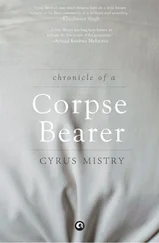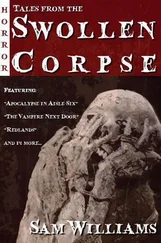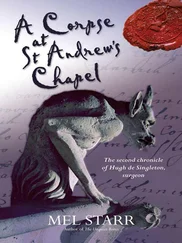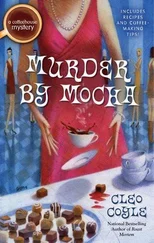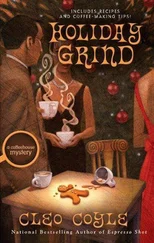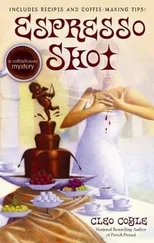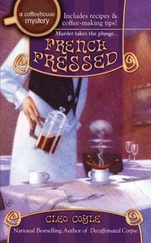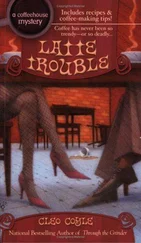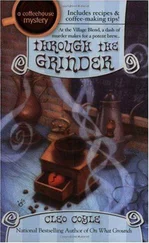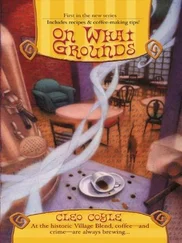Клео Коул - Decaffeinated Corpse
Здесь есть возможность читать онлайн «Клео Коул - Decaffeinated Corpse» весь текст электронной книги совершенно бесплатно (целиком полную версию без сокращений). В некоторых случаях можно слушать аудио, скачать через торрент в формате fb2 и присутствует краткое содержание. Год выпуска: 2007, ISBN: 2007, Издательство: Berkley, Жанр: Детектив, на английском языке. Описание произведения, (предисловие) а так же отзывы посетителей доступны на портале библиотеки ЛибКат.
- Название:Decaffeinated Corpse
- Автор:
- Издательство:Berkley
- Жанр:
- Год:2007
- ISBN:978-1-436-25369-7
- Рейтинг книги:5 / 5. Голосов: 1
-
Избранное:Добавить в избранное
- Отзывы:
-
Ваша оценка:
- 100
- 1
- 2
- 3
- 4
- 5
Decaffeinated Corpse: краткое содержание, описание и аннотация
Предлагаем к чтению аннотацию, описание, краткое содержание или предисловие (зависит от того, что написал сам автор книги «Decaffeinated Corpse»). Если вы не нашли необходимую информацию о книге — напишите в комментариях, мы постараемся отыскать её.
Decaffeinated Corpse — читать онлайн бесплатно полную книгу (весь текст) целиком
Ниже представлен текст книги, разбитый по страницам. Система сохранения места последней прочитанной страницы, позволяет с удобством читать онлайн бесплатно книгу «Decaffeinated Corpse», без необходимости каждый раз заново искать на чём Вы остановились. Поставьте закладку, и сможете в любой момент перейти на страницу, на которой закончили чтение.
Интервал:
Закладка:
As I shrugged out of my jacket, I inhaled the wonderful, jasmine and bitter orange blossom scent of the white coffee flowers. It brought me back to one of the few business trips I’d taken with Matt—to the Kona district of Hawaii’s Big Island. The buying trip had doubled as our honeymoon. Our hotel room’s French doors opened to a view of the wild Pacific, and we’d made love so often during those two perfect weeks, I’d be hard pressed to guess a grand total.
“These coffee trees are beautiful,” I said.
Ellie’s reserved smile became warmer. “Thank you... although technically they’re shrubs.”
“Excuse me?”
“It’s true, the Coffea plant is often called a ‘tree’ by people in the trade, but botanically it’s classified as a shrub, more precisely as a perennial evergreen dicogtyledon.”
“Right.”
She smiled. “That just means it’s a plant that’s always green and has two seeds per fruit body.”
She went on to explain that her month-long exhibit on the horticulture of coffee would officially open next week, in honor of the International Coffee Growers Exhibition. I could see she was proud of it.
“I’m just putting on the finishing touches... you see...”
Ellie took me to the center of the room where a diorama illustrated the origins of your average cuppa Joe. I was well acquainted with these basics, having written about the beverage for years. But most coffee drinkers downed pound after pound without considering the source.
Ellie’s display nicely explained that coffee beans actually come from berries (“cherries” to those of us in the trade). These cherries are green in the early stages of growth. They then mature to yellow and red. They’re ripe at dark crimson, which is when they yield the best coffee via the two seeds (beans) inside.
“The average arabica coffee plant takes about five years to mature and produce its first crop,” Ellie said.
That I knew. “And of that crop, it will take an entire coffee ‘tree,’ ” I added with air quotes, “to produce only one pound of coffee; i.e. about forty cups.”
“Forty cups in one pound?” she said. “That I didn’t know.”
We both laughed, and I repeated how great her exhibit looked. Then I told her: “Actually, the reason I’m here, Ellie, is because of Ric. Matt and I are going into business with him—”
“I know. Ric’s very happy. He and Matt told me all about it.”
“Matt? You’ve been seeing Matt, too?”
“Yes, of course. We met many times over the summer. I’m surprised he never mentioned it. I asked about you, and he said you were very busy in the Hamptons, helping a friend open a new restaurant?”
“Yes, I was.”
“He assured me I’d be seeing you Friday,” Ellie said. “So I was looking forward to catching up then—”
“Friday? You mean the Beekman Hotel? You’ll be there for the big tasting and announcement?”
“Absolutely. Ric’s counting on me. I’ll be there to answer any questions the journalists may have about his hybrid’s viability.”
“You’re his seal of approval then? Like Good Housekeeping ’s endorsement of a really good floor cleaner.”
Ellie’s eyes narrowed slightly. “Something like that.”
“He told me that you’re helping him apply for a plant patent.”
“A plant patent? No.”
“No?”
I waited for Ellie to explain, but her attention had strayed to a small, middle-aged Asian man who’d wandered into the coffee plant room. He had short dark hair threaded with gray, a pale complexion, and slightly almond-shaped eyes. He wore loose silver-blue track pants and sneakers; and although it was a warm day, even warmer in the greenhouse, he’d kept his blue jacket on and zipped up to his chin.
I’d already removed mine.
“Excuse me, sir,” Ellie called politely, “but you shouldn’t be in here.”
The Asian man didn’t hear her, didn’t understand, or was simply ignoring her. He continued around the room, looking at each of the plants.
“Is there a problem?” I whispered.
“The exhibit’s not quite finished,” she whispered in reply. “So it’s not yet open to the public. I’m surprised this gentleman didn’t see the sign.”
I raised an eyebrow. There was a single entrance to this room of the glasshouse, and the standing sign in front of that displayed a big red circle with a slash through it and the words: STOP! DO NOT ENTER. STAFF ONLY.
“I’m sure he saw it,” I whispered to Ellie. “I’m also betting he ignored it. Big red stop signs are pretty universal. Maybe you should escort him out.”
Ellie frowned. “Better not. I’ve seen him around the Garden recently. He’s probably a new member—they pay annual dues to enjoy special privileges. It won’t hurt him to take a quick look, as long as I stay to make sure he doesn’t touch anything.”
“Oh, okay...” I said.
We quietly watched the man after that. He carefully ignored eye contact with us as he worked his way around the room, studying the different varieties of coffee trees and the explanatory plaques beside each one.
“You were saying?” Ellie prompted, turning back to face me.
“Uh... yes,” I said quietly. “I was wondering why Ric would mislead me. He told me that you were helping him file for a plant patent, but you said you weren’t.”
“No. Not a patent.”
I shook my head, more distressed than ever. “I don’t understand why Ric would lie to me.”
“He didn’t lie. He was simply using an incorrect term.”
“I don’t understand.”
“His arabica hybrid can reproduce sexually, so I’m not applying for a patent .”
“Are you joking?”
“Absolutely not. The Plant Patent Act of 1930 covers asexually reproduced plants. In other words, plants that replicate through means other than germinating seeds. Like vines, for example. Since Ric’s hybrid reproduces through seeds, I’m helping him file for a plant variety protection certificate. It’s an intellectual property protection, not a patent.”
“But will it protect Ric’s rights to the plant?”
“Yes, of course! The certificate will give him up to twenty years of exclusive control over his plant. If anyone attempts to breed and sell Ric’s hybrid without licensing it from him, he has a right to file charges and sue them. It even prevents others from using it to produce a hybrid or different variety.”
“Just in the United States?”
“Not just. He’ll be protected all over the world.”
Before I had to ask, she explained the Plant Variety Protection Act was really just the United States’s effort to comply with the Union pour la Protection des Obtentions Végétales, an international treaty on plant breeders’ rights. Every major country had signed on, including Brazil.
“So why didn’t Ric file himself?” I asked. “Why didn’t he work with the Brazilian authorities to protect his new plant?”
My question seemed to have rendered Ellie speechless. She stared at me, seemingly at a loss, and I couldn’t tell if it was just the warmth of the greenhouse or something else, but a pronounced blush was spreading over her fair face.
“Ellie?” I whispered. “There’s something you’re not telling me... what is it?”
When she continued to hesitate, I took an educated guess—given that Ric hadn’t even gotten the terminology right on the paperwork. “Ellie, are you the one who really produced this hybrid? Did you make the breakthrough?”
“Excuse me, Ms. Lassiter?”
I turned to find a young man staring at us. I hadn’t heard his footsteps, and I wondered how long he’d been standing there.
“What is it?” Ellie asked him.
Читать дальшеИнтервал:
Закладка:
Похожие книги на «Decaffeinated Corpse»
Представляем Вашему вниманию похожие книги на «Decaffeinated Corpse» списком для выбора. Мы отобрали схожую по названию и смыслу литературу в надежде предоставить читателям больше вариантов отыскать новые, интересные, ещё непрочитанные произведения.
Обсуждение, отзывы о книге «Decaffeinated Corpse» и просто собственные мнения читателей. Оставьте ваши комментарии, напишите, что Вы думаете о произведении, его смысле или главных героях. Укажите что конкретно понравилось, а что нет, и почему Вы так считаете.

